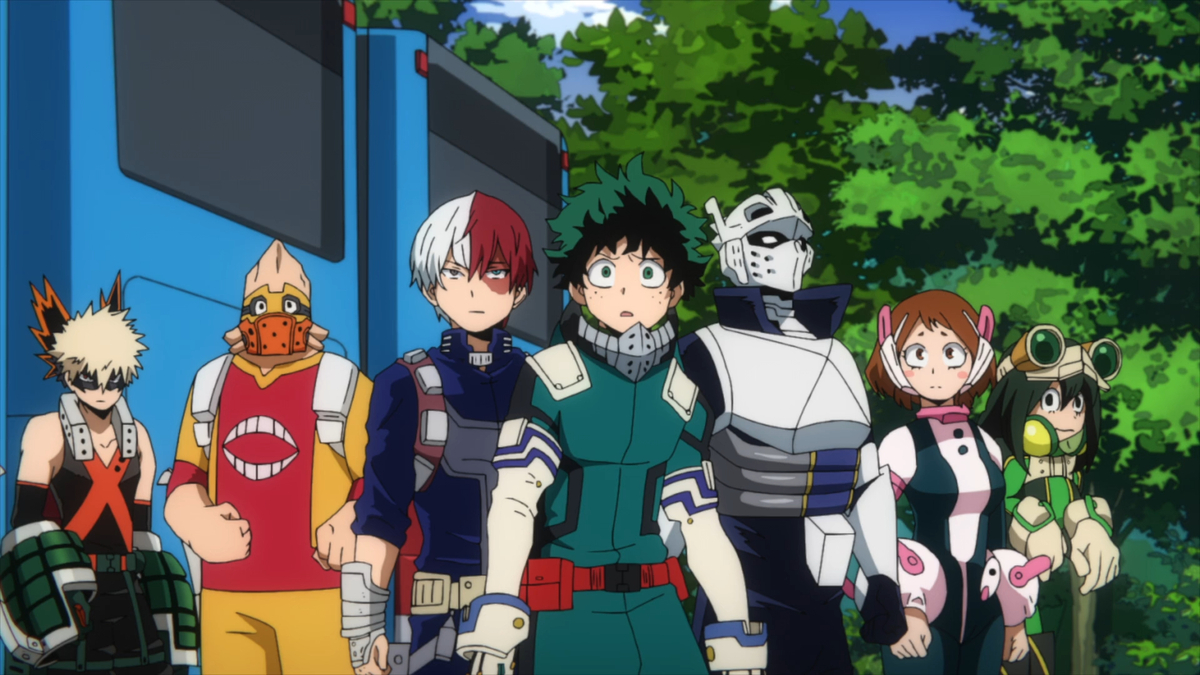
Advertisement
When My Hero Academia (MHA) first burst onto the scene in 2016, it reignited excitement for the shonen genre. With vibrant animation, a rich hero society, and a wide cast of relatable characters, the anime quickly became a global sensation. It was seen as the next big thing—Naruto for a new generation.
Fans fell in love with Izuku Midoriya (Deku), a powerless boy gifted with incredible potential, and the show’s central message: anyone can be a hero. Its early seasons balanced emotional storytelling, exhilarating battles, and thought-provoking commentary on justice, fame, and morality.
Fast forward to 2025, and the tone has shifted. The once-bright narrative has grown darker, the battles more brutal, and the lines between hero and villain blur with every episode. Some longtime viewers feel disconnected, claiming the show has lost its heart. Others argue it’s evolving, reflecting a natural character and thematic progression.
So, is My Hero Academia genuinely losing its charm—or simply maturing in a way fans didn’t expect?
In this deep dive, we’ll examine:
-
The key elements that made MHA resonate early on
-
Why some fans are experiencing fatigue or disappointment
-
How the shift in tone reflects character growth and deeper themes
-
The strengths and stumbles of the recent arcs
-
Whether this evolution signals decline or maturity
What Made MHA So Beloved in the Beginning
1. A Fresh Take on Superheroes
MHA’s hero society wasn’t just about good vs. evil—it was about what it means to be a hero. The anime blended Western superhero tropes with Japanese emotional storytelling, making it unique and resonant.
2. A Lovable Underdog
Deku’s journey from Quirkless outcast to rising hero touched a nerve. Unlike other shonen protagonists, he wasn’t born special—he was chosen, and that made his struggle feel earned.
3. Rich World-Building
The idea of 80% of the population having powers (Quirks) introduced endless creative potential. From school festivals to internships, the world felt alive, structured, and believable.
4. A Cast of Fan Favorites
Characters like Katsuki Bakugo, Shoto Todoroki, Ochaco Uraraka, and All Might quickly became anime icons. Their development, rivalries, and dynamics added depth to what could’ve been a simple hero training show.
Where the Disillusionment Began
As the anime moved into later seasons—particularly post Endeavor’s Redemption Arc and during the Paranormal Liberation War Arc—the tone grew grim. And for many fans, that shift felt jarring.
1. The Death of Innocence
Early seasons focused on hope, teamwork, and personal growth. Recent arcs have leaned heavily into trauma, war, and societal collapse. For some, that tonal whiplash was hard to accept.
2. Pacing and Overcrowded Arcs
The manga’s ambitious scope translated into increasingly packed anime episodes. Arcs like the Joint Training Arc or Meta Liberation Army struggled with pacing, introducing too many new characters at once and diluting the focus.
3. Too Much Deku?
While Deku’s solo arc—where he temporarily leaves U.A. and adopts a darker persona—was bold, some felt it sidelined the ensemble charm that once defined the series.
4. Villain Sympathy vs. Clarity
The anime has spent significant time exploring villain backstories, especially Tomura Shigaraki and Dabi. While these moments add depth, they’ve also created confusion around the show’s moral compass.
Evolution or Decline? Thematic Growth in Recent Arcs
Despite the criticisms, there’s a strong argument that MHA is simply growing up with its characters.
1. War Arcs Demand Consequence
The Paranormal Liberation War and the Final War arcs are darker by necessity. The stakes are real now. Heroes are dying. The villains are no longer minor threats—they’re revolutionaries with deep, painful histories.
2. Deku’s Transformation Feels Earned
Deku’s darker phase shows a realistic response to overwhelming pressure. He’s not the same timid boy from Season 1. He’s someone carrying the hopes of many—and the scars that come with them.
3. All Might’s Fall and Legacy
All Might’s retirement forced a power vacuum and an identity crisis for the hero world. The narrative didn’t shy away from the consequences of losing a symbol—and that’s powerful.
4. A Critique of Hero Society
Rather than glorify the hero system, MHA now critiques it. The cracks in its structure—media sensationalism, political incompetence, public disillusionment—mirror real-world questions about justice and power.
The Challenges of Balancing Scale and Emotion
As MHA grows in scope, it sometimes loses sight of what made it special: intimate character-driven moments.
1. Ensemble Characters Feel Underused
Characters like Iida, Tsu, and Kirishima once had strong arcs. Now, they often serve as background support while the spotlight stays on Deku and a handful of key players.
2. Plot Creep and New Quirks
The introduction of multiple Quirks within One For All (especially the past users) made the story more complex, but also harder to follow. Some fans argue it undermines Deku’s relatability.
3. Fan Fatigue from High Stakes
Every arc now feels world-ending. While this raises tension, it also risks emotional burnout. Viewers need downtime—school life, training, humor—to re-engage with the characters.
Conclusion: Growing Pains or a Brilliant Finale?
My Hero Academia is no longer the upbeat, colorful training story it once was. But that doesn’t mean it’s lost its way. Like its characters, the series is facing the real cost of heroism.
It’s fair for fans to feel nostalgic for earlier seasons—those moments of light, laughter, and friendship. But it’s equally fair to praise the current arcs for tackling weighty themes: sacrifice, legacy, generational trauma, and systemic failure.
So is MHA losing its charm? Not exactly. It’s shedding its youthful glow for a more mature, emotionally intense narrative. That shift won’t appeal to everyone—but for those willing to grow with it, the journey is still incredibly rewarding.
In the end, My Hero Academia is doing what all great stories eventually must: it’s evolving.
